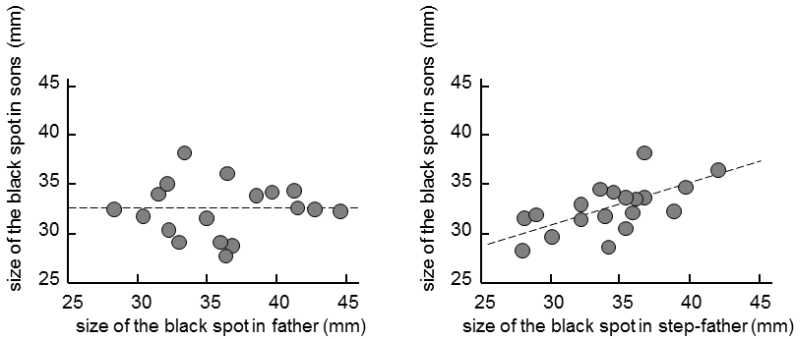XV.5.5.1 If secondary sexual traits are to function as indicators of an individual’s quality, their expression must be cost-intensive
If a certain trait fulfills the function of a signal informing a female of the quality of the particular individual, then it is advantageous for males to cheat and exhibit the particular trait even if their viability is actually low. A relatively simple way of ensuring that the signaling individual cannot “cheat” is to select, as a trait fulfilling the function of a signal, a trait that is cost-intensive for its bearer, that burdens him in some way. If the secondary sexual trait has the character of a burden, then only high-quality individuals with sufficient reserves in their viability can permit themselves full expression.
It should be noted that, in this model, a burden associated with a secondary sexual trait has a fundamentally different function than a handicap in the formerly described handicap hypothesis. Nonetheless, the indicator and handicap hypotheses are frequently confused and a great many authors, including their original author (Zahavi 1975), are not always capable of adequately differentiating them. If a trait acts as a handicap, then it is more advantageous for the female to choose a male that is objectively hindered most by his secondary sexual trait. In contrast, when the trait only acts as a reliable (and thus cost-intensive) signal, it is advantageous for the female to choose a male who is apparently not bothered the presence of his secondary sexual trait. In the first case, the theory predicts that it is advantageous for the males to pretend that the relevant trait is a great burden for them, while in the second case, it would be better to pretend that the presence of the particular trait doesn’t bother them at all. A decision can also be made between the two models on the basis of empirical data. Comparative studies (observations) should demonstrate a positive correlation between the fitness of the male and the presence of the particular secondary sexual trait both when the trait acts as an indicator and simultaneously as aburden, and also when it acts as a classical handicap. In the first case, this is because the trait developed in direct connection with the great viability of the individual, in the second case because individuals with a handicap and simultaneously insufficient fitness are eliminated by environmental selection during their lifetime. On the other hand, if we perform an experiment during which we limit or completely exclude the action of environmental selection on the studied population, if the indicator model is valid there should still be a correlation between the degree of expression of the secondary sexual trait and the viability of its bearer; however, for the handicap model this correlation should not appear, as weak individuals with a high degree of expression of the secondary sexual trait would remain in the population.
Secondary sexual traits can burden their bearers in various ways. The presence of various hypertrophied morphological structures can hinder males in movement (Balmford, Thomas, & Jones 1993).In flycatchers, the size of the white spot on the forehead signals the physical condition of the individual; however, simultaneously, light reflected from this spot hinders its vision (Gustafsson, Qvarnstrom, & Sheldon 1995).In a great many cases, the formation of these structures is bound to a high level of sex hormones, where these sex hormones reduce the functioning of the immune system. Males with more striking secondary sexual traits can thus be handicapped by greater susceptibility to infestation and more serious progress of a disease (Folstad & Karter 1992; Moller & Saino 1994; Wedekind & Folstad 1994). A study performed on lions demonstrated that the manes of the males could act as a very effective indicator of quality. Males with dense, dark-coloured manes, which are preferred by females, have obvious problems associated with thermoregulation, so that they substantially decrease their intake of food in the hottest months of the year. In accordance with the theory, a thick mane has only very low heredity, but varies amongst individuals in relation to age, testosterone level and injuries (Fig. XV.7) (West & Packer 2002).

Fig. XV.7 Relationship between the stomach size (indicator of fullness) and the average monthly temperature of the environment for lions in the Ngorongoro crater. The stomach size was evaluated visually on a five-point scale (1 – full stomach, 5 – completely empty stomach). The numbers next to the individual points correspond to the number of observations. The results indicate that, in contrast to males, the females do not limit their food intake during the hot months of the year (a) and that males with dark-colored manes have a greater food intake than males with light-colored manes only in the colder months of the year (b). According to West & Packer (2002).
The principle of unfalsifiable viability indicators, designated in a rather simplified manner as the handicap principle, is also valid in other areas of communication between organisms than communication between sexual partners for the purpose of affecting the results of sexual selection. The author of the hypothesis, A. Zahavi, demonstrated that, through structures or patterns of behavior constituting a burden for their bearers, some animals signal to predators that they are in good condition and that they should choose as a target for attack some other individual in the population (Zahavi 1997).
